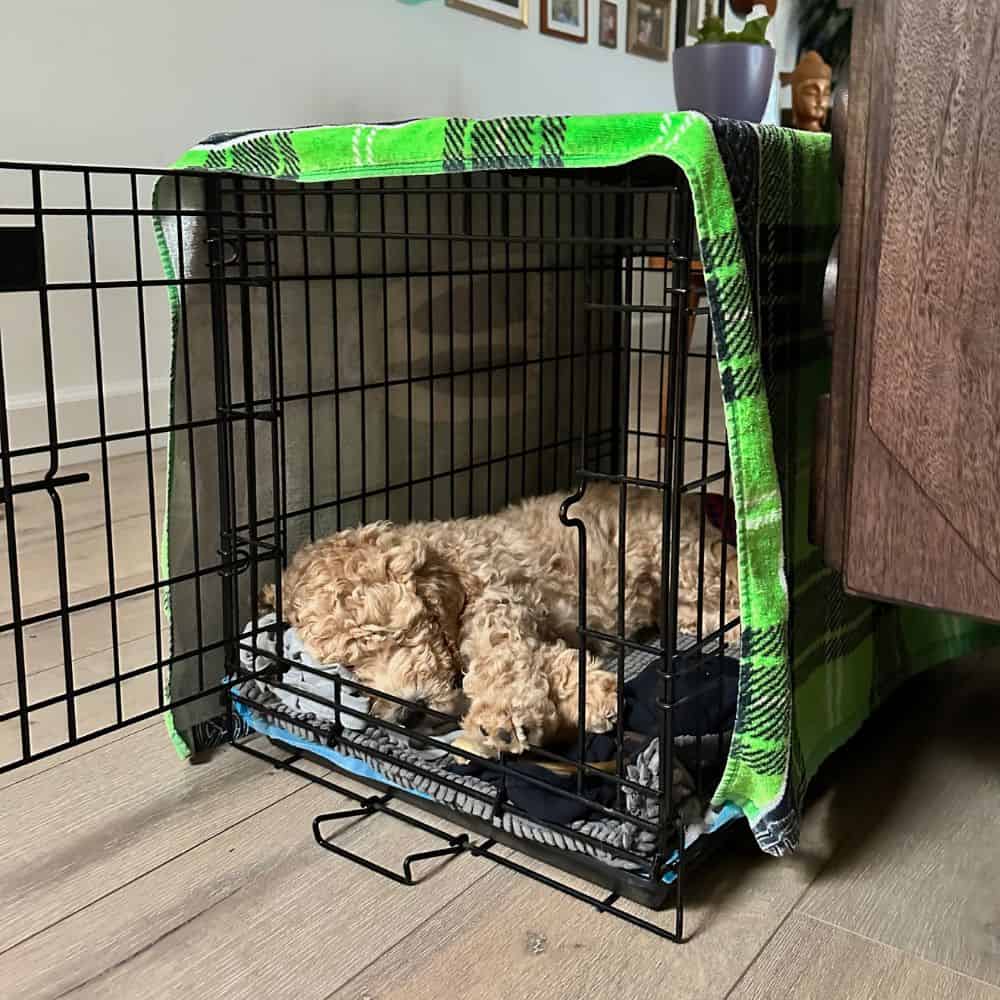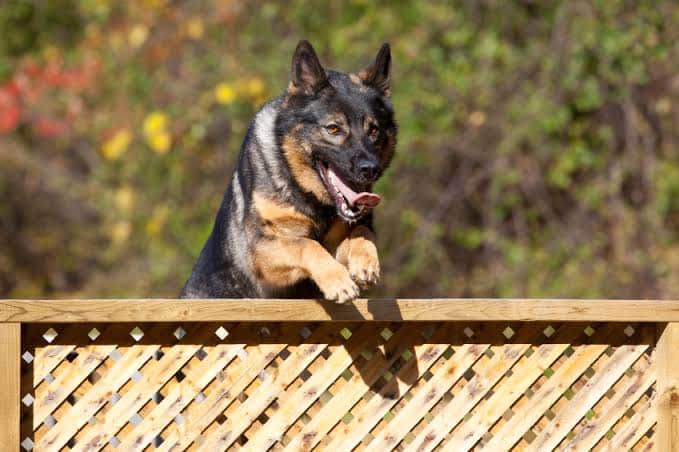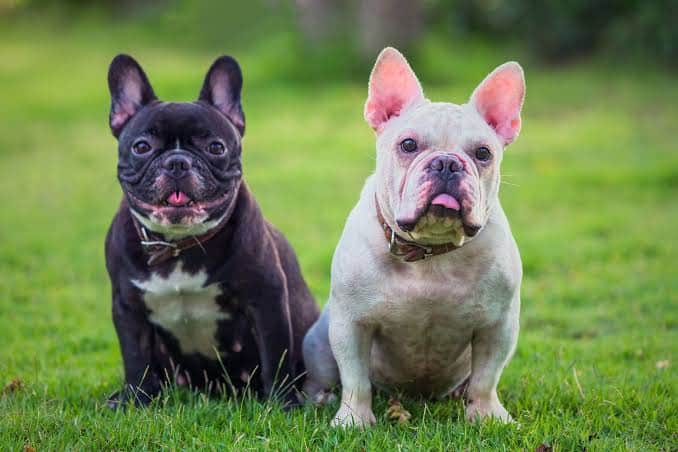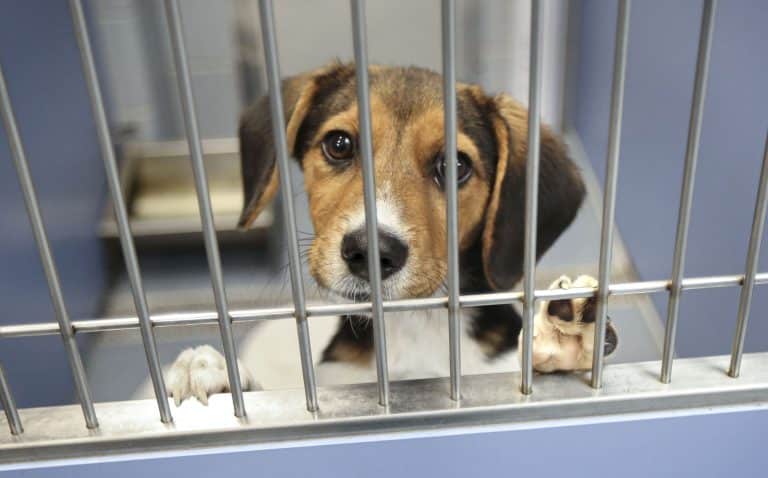7 Simple Steps for Puppy Crate Training at Night
Crate training a puppy is an amazing way to help puppies develop a well-behaved and routine manner. The benefits of puppy crate training at night are numerous; it also provides a safe environment for pups, reduces their anxiety, and much more. It prevents housebreaking and eliminating here and there as they avoid soiling their sleeping places.
But how to do puppy crate training at night? What are all the things you need to consider? Are there any specific requirements? What if your puppy doesn’t respond well to crates? If all these queries bother you, rest assured you have landed at the right place.
Carry along with us till the end to learn how to crate train a puppy at night, along with a precise solution to all the queries and much more. Let’s explore!
Simple Steps to Crate Train a Puppy at Night
Puppy crate training at night requires careful consideration, which backs up successful training. But definitely, it’s not as hard as many think. Follow these 7 simple steps wholeheartedly, and you’re good to go.
Step 1: Choose a Right Crate

- Size: The first and foremost is to choose an appropriate size crate for your puppy. This means it should be large enough for them to stand up, turn around, and lie comfortably. Remember, it should not be too large that they can use one end for sleeping, and the other remains vacant.
- Type of Crate: A wide variety of crates are available in the market, like wire crates, plastic crates, and soft-sided crates. The wire creates are popular because of the ventilation and visibility. Plastic crates are more enclosed and cozy, while soft-sided ones are portable and lightweight. Choose the one that best fits your puppy’s needs and wants.
- Location: Wisely decide where you will place the crate in your home, focusing on creating a comfortable and inviting space for your puppy. Choose a place that is quiet and has a low-traffic area. Further, avoid putting it in direct sunlight, near drafts, or in any area with the highest temperature.
- Accessibility: While choosing, make sure the crate has a latch on the door to prevent any accidental escapes. Some crates have a removable top or front; they are usually helpful for cleaning or for a hesitant puppy to get used to the crate.
- Safety: Double-check for sharp edges or protruding parts in the crate that can harm your puppy. Also, ensure the crate is sturdy and won’t collapse when your puppy is inside.
Step 2: Make the Crate Comfortable
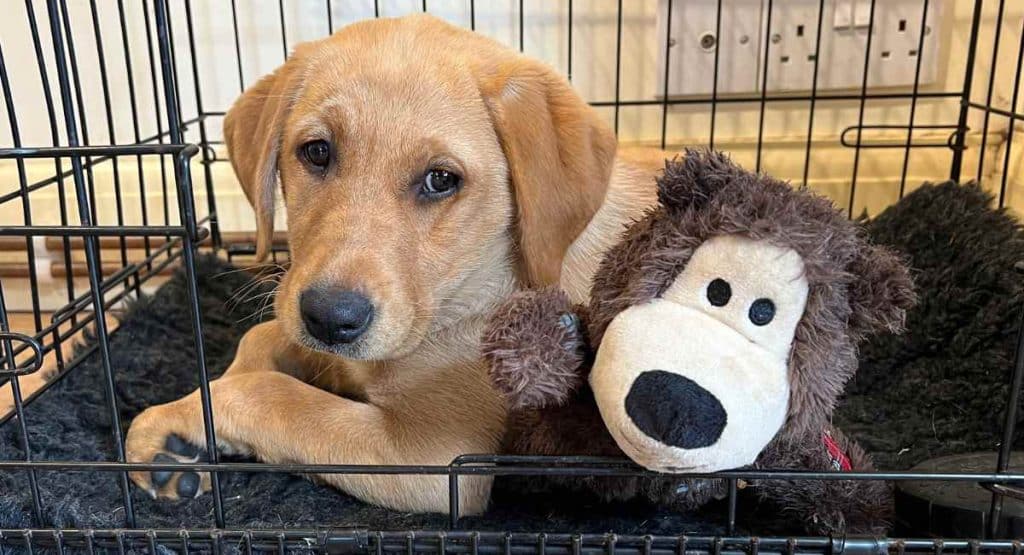
Customizing the crate for comfort matters much for puppy crate training at night. For the same, you need to consider several things; the below-listed points will make you aware of the same.
- Bedding: Place a soft washable blanket or pad at the bottom of the crate. This will provide a comfortable surface for your puppy to rest on. However, it shouldn’t be too long; proper fit is required.
- Toys: It’s good to place a few toys inside the crate as it helps keep your puppy occupied. However, avoid placing toys that have small parts that could pose a choking threat.
- Familiar Scents: Introducing a piece of clothes or blanket with your scent. Doing so makes your puppy feel comfortable, especially during the initial stages of crate training a puppy at night.
- Adjustments: Adjust bedding or toys if your puppy seems more comfortable with a particular item.
Step 3: Introduce Puppy During the Day
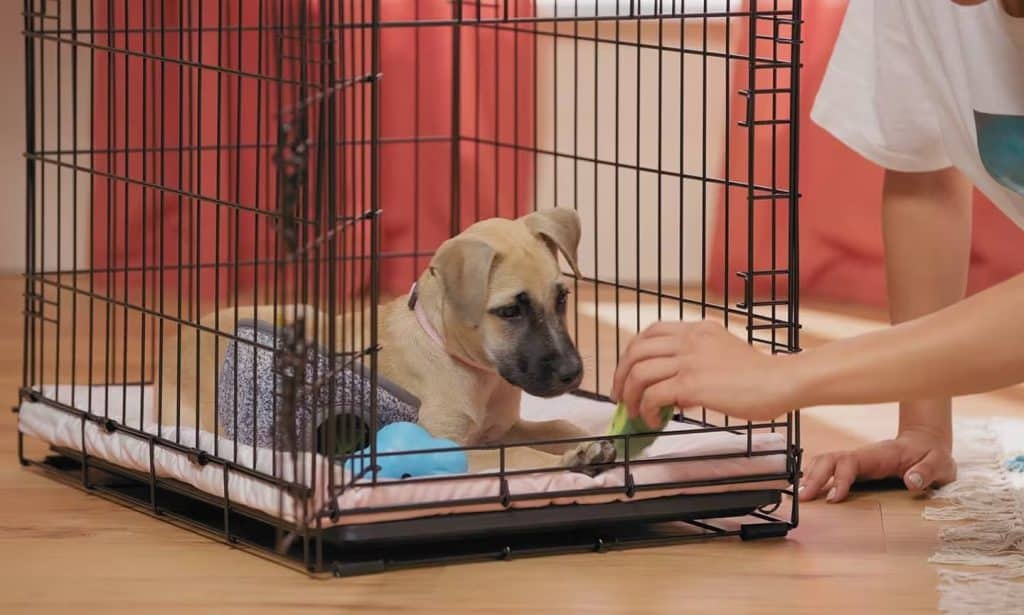
Once you have made the crate comfortable as per your puppy’s needs, it’s time to introduce it to the crate; here is how you can achieve the same.
- Daytime Introduction: The idea for daytime introduction is to make the crate a normal part of your puppy’s daily routine. Keep it in a place that is a common area for your puppy during the day.
- Persuade Exploration: This doesn’t mean forcing your puppy inside the crate. Use some tactics that persuade them to approach the crate on their terms.
- Ignore Whining: At the start of the day, puppy crate training at night may show signs of anxiety or whines, but refrain from immediately letting them out. Doing so teaches them that whining results in being released. It’s better to wait until they are quiet or calm before opening the door.
- Short Sessions: Short and frequent sessions are more helpful than long ones.
Step 4: Make a Proper Bedtime Routine
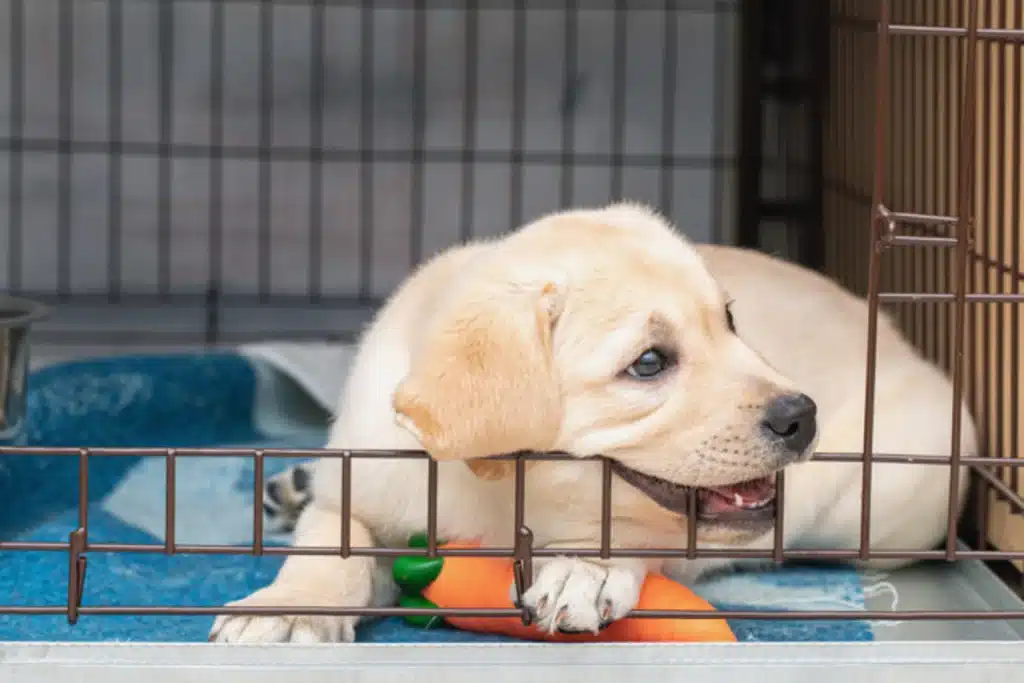
Bedtime routine is crucial during puppy crate training at night, simply because it helps your puppy develop a proper habit. The below points will help you with the same.
- Set a Bedtime: Decide on a specific time for each night when your puppy will go into the crate. Fix a time on which you can be consistent for a long time.
- Wind-Down Activities: This includes calm and relaxing tasks you should engage your puppy in, like walking, cuddling time, or a short play. Don’t play high-energy games or stimulating activities. An ideal time for this is 30 minutes before bedtime.
- Bathroom Break: Before you place your puppy in the crate for the night, take them outside for a bathroom break. This reduces their chances of needing to go for the same during the night.
- Crate Time: Use treats or toys to encourage your puppy to enter the crate daily. This will work as a signal that tells your puppy it’s time to go into the crate. Be patient and allow them to enter the crate independently, if possible.
- Ignore Nighttime Whining: During the starting phase of puppy crate training at night, it’s common for them to whine or cry at night. Do not respond immediately to this behavior; give them time to settle down. However, if this continues for a long time, check without taking them out of the crate.
Step 5: Use Positive Reinforcement for Crate Time
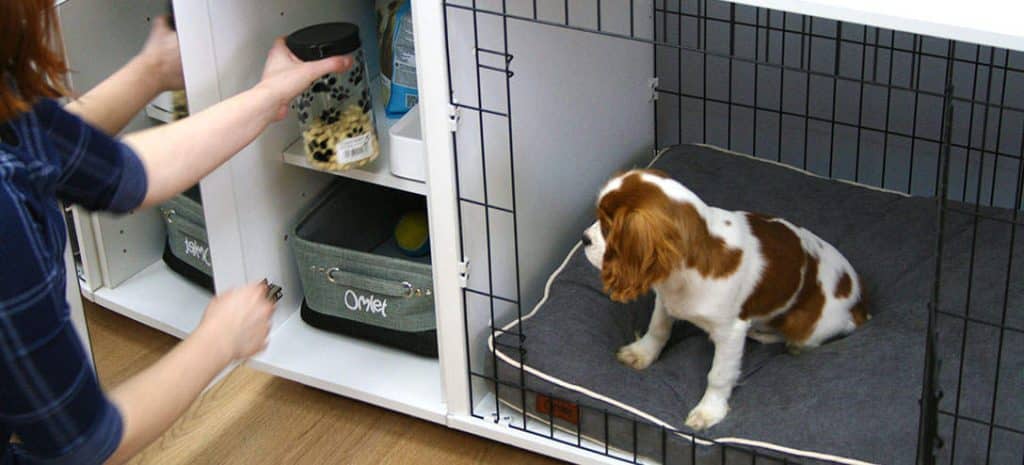
- Reward Approach: Puppy crate training at night should be a positive experience for your puppy; therefore, treat, praise, or show affection towards them. This will make them associate the crate with positive feelings.
- Mealtime in the Crate: It’s a commonly used tactic to create a positive association with the crate. Start by placing their food bowl just inside the great and gradually move it further with time as they become more comfortable.
- Never Force: Refrain from physically forcing your puppy into the crate. They must enter the crate with their own will, as it builds trust and ensures your puppy views it as a safe and enjoyable space.
- Avoid Punishments: Many people use crates as a place for punishment but avoid doing so. Simply because if your puppy associates the crate with a negative experience, it can just undermine the entire puppy crate training at night process.
Step 6: Gradually Increase the Crate Time
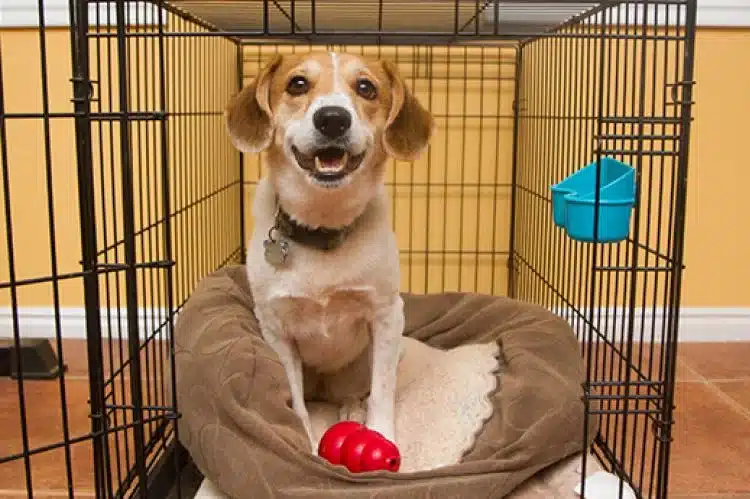
Don’t be hasty in increasing the crate time; gradually increasing is a key to successful puppy crate training at night. Below points will tell you how to do the same.
- Baby Steps: During the initial phase of puppy crate training at night, begin with a short period. Also, your puppy might need to be let out for a bathroom break, so be prepared for interruptions.
- Observation: Monitor your puppy’s behavior in the crate. If they start whining, scratching, or showing some other signs, it might indicate they need a bathroom break. Don’t avoid this behavior during the initial phases to avoid accidents in the crate.
- Gradual Extension: With time, gradually extend the periods your puppies remain in the crate without being let out. This slow increase in time will help them learn to hold their bladder for longer periods.
Step 7: Be Patient and Consistent
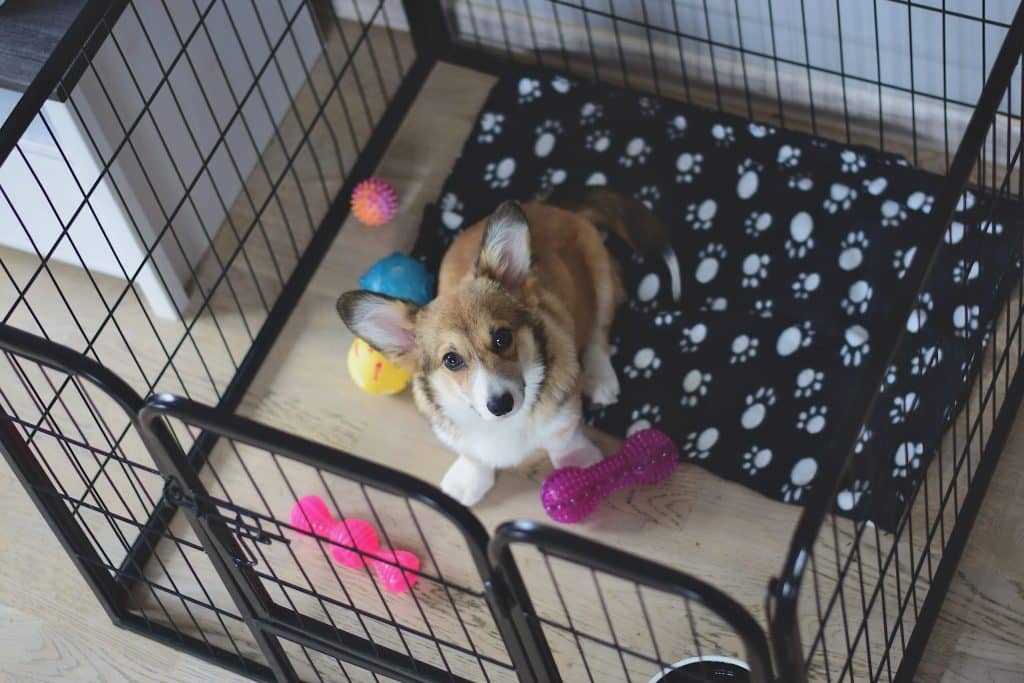
The steps or points under this should or should be followed on every step mentioned above for successful puppy crate training at night.
- Understand the Process: Puppy crate training at night isn’t a game of a few days. It’s a gradual process that requires time, especially for young puppies. For a proper gradual extension, you must understand your puppy’s adaptations to new environments and routines.
- Stay Calm: It doesn’t matter what challenges or setbacks you are dealing with; it is necessary to be patient and calm. Remember, your puppy may whine or resist the crate during the starting period; only your calm nature can help create a positive atmosphere.
- Consistency is Key: Follow a consistent routine. This includes using the same commands, cues, and schedule for puppy crate training at night.
- Support: If you are facing continuous issues, it’s better to seek help from a professional dog trainer or veterinarian. They will provide advice and solutions that align with your puppy’s specific needs.
Why is the Puppy Whining in The Crate?
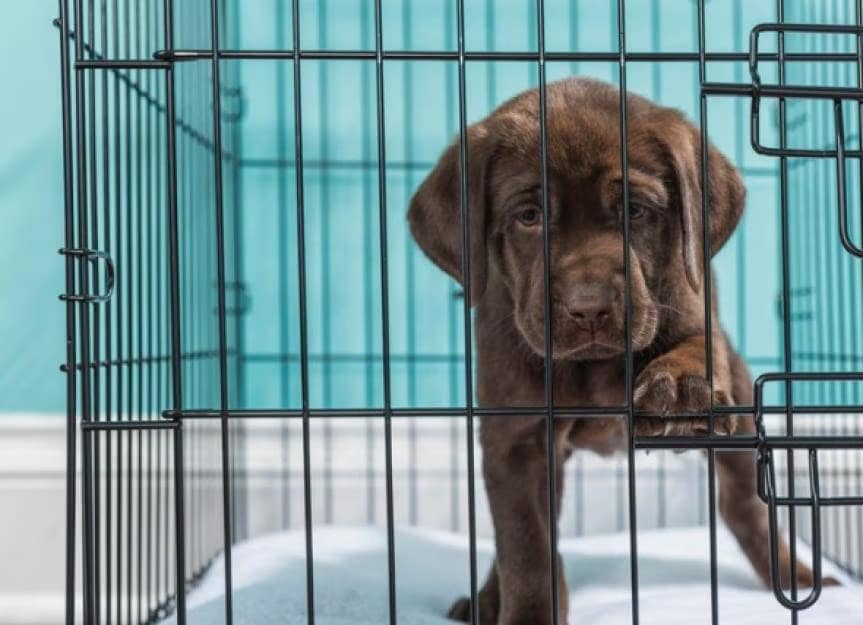
Puppies cry in the crates for various reasons during puppy crate training at night. There’s nothing to panic about as it’s how they tell their needs. Sometimes, they cry because of anxiousness in the crate or when feeling lonely or seeking attention.
How to avoid this? Firstly, make sure that the crate is comfortable for your puppy. Make it cozy by placing blankets and toys. Gradually, introduce them to create through positive reinforcement like treats and praise. Further, it’s essential to make a routine for bathroom breaks and playtime so the puppy doesn’t whine when they need to go out. Lastly, consistency, patience, and, most importantly, positive reinforcement tactics will help your puppy adapt to the crate, reducing whining over time.
Why is the Puppy Crying in The Crate?
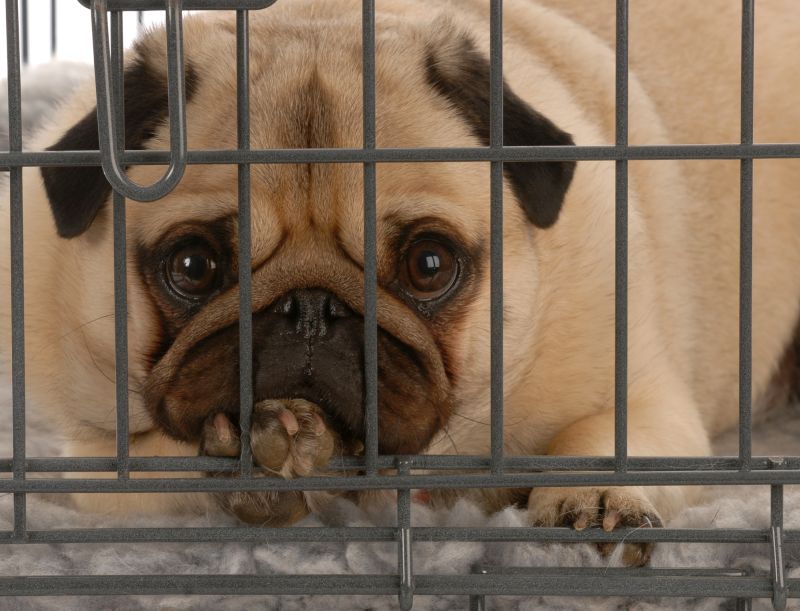
If you’re at the initial stages of puppy crate training at night crying, there is no need to worry, as it’s common. The reason is that your puppy isn’t adapted to crate surroundings, feels uncomfortable, or may have limited bladder control.
How to fix this? Well, the steps required are the same as successful puppy crate training at night. Firstly, ensure the crate is of appropriate size. Proper size is necessary, but blankets and toys are necessary for additional comfort. Further, you must stick to a timetable longer and reinforce it with treats and praises whenever required.
Also, be patient, especially during the initial phases, and refrain from using crates as punishment. Following these practices can surely help. However, if your puppy still cries, there may be another reason; hence, it is better to consult a dog trainer or veterinarian.
Do Puppies Hate Crates?
The answer is yes and no, meaning it varies from puppy to puppy. Many puppies hate crate because it seems to them as confinement or isolation. However, puppies’ hate for crates can be avoided by gradually introducing them to crates, using positive reinforcement techniques, and avoiding using them for long periods.
Conclusion
All in all, puppy crate training at night might seem tedious, but that isn’t the case. The steps mentioned above will surely help to master the same. Surely, you’ll face difficulties when starting puppy crate training at night, but with time, it’ll be gone. Your puppy may whine or cry, but that’s because the crate is something new for them, and that’s where gradually increasing crate time helps a lot.
Apart from your puppy’s behavior, what matters more is your patience and calmness. We hope you got the information you were looking for. If you have a firm hold on both, rest assured you’ll gain victory. If you face any issues or have queries, just let us know in the comment below.
We’ll ensure to help you in the best possible way. What’s your opinion on crate training? Is it good?

